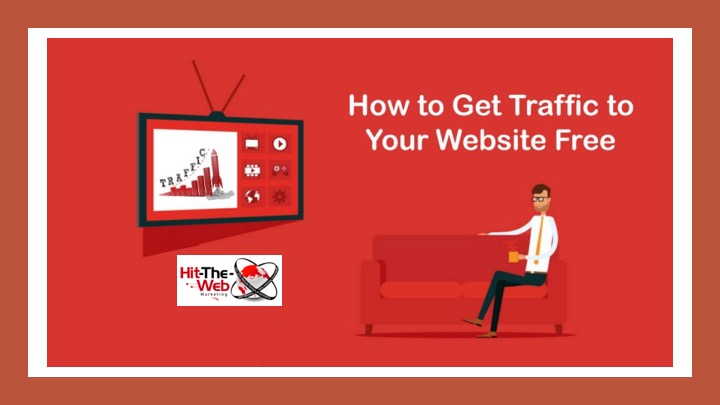We reached out to expert marketers to provide tips on free website traffic generators. Learn how email marketing strategies, content marketing, and networking methods will drive traffic to your website. Not just any traffic, qualified traffic. This means higher conversions and more sales, more profits for your company. We discuss specific examples, links to resources, relevant statistics. Our aim is to provide our readers with high-quality, actionable, and unique tips and ideas.

Using Email to Quickly Get More People to Your Website
Email Marketing is one of the greatest ways to instantly generate new revenue however people rarely think about using it to drive people (traffic) to their website.
Here’s are some surefire tips to help you do that:
1 – Optimize for Mobile Readers
With over 60% of email being read on a mobile device, the number one factor to having success in your email marketing is to make certain your readers can actually read your message. Here are two key tips to make your email message easier to read on a mobile device: 1 – Use a relatively large font size. 2 – Break up long paragraphs into sentences with whitespace between them.
2 – Segment Your Email List into Categories Based on Interest
Segmenting your readers into different categories based on their interest, and then tuning your message content to match, will do two things for you. One, it will get more people to pay attention to what you have to say. Two, your engagement rate will be much higher. The goal is to get the person who opens your message and begins to read it to instantly think: “This is for me”. Therefore, before you blast out your next email message, consider who is going to read it, and then craft the message so it seems like you wrote it just for them.
3 – Personalize and Optimize
Personalization is another key factor because statistics show the more personal a message is to someone, the more likely they are to completely read it and take action. Simply ways to personalize a message beyond using the person’s first name in the salutation is to use custom fields with the name of their town, the industry they work in and their company name. Taking the time to fit this into your message is another way to greatly improve your engagement rate.
4 – Engage to Drive People to Your Website
And speaking of engagement rate, here’s the most important question you need to answer BEFORE you tap the send button: What is the one thing you want the person to do once they read your message? In our case, because we are using email to drive people to your website, the Call-to-Action should be to do just that.
What should your 2 Part Message Be?
Plan your message to consist of two parts. Part One goes in the email message and contains enough detail to spark an interest in your reader and get them curious enough to “take action”… Which of course is to click-through to your website. Part Two (obviously) is the rest of the content which resides on your website (or blog). Get people used to “tapping” to take the next step. This will help you not only identify your most avid readers (which you can segment into their own list), but it will also lead people towards taking action on your website offers.
5 – Use a PS
This last tip is one that almost no one uses yet can have the greatest impact on your engagement rate. Always use a PS at the bottom of your email message (under the signature line) to restate the Call-to-Action. Extensive studies show over 38% of people will instantly scroll to the bottom of an email message to see who it is from. The next thing they will read is the PS. A great format to use in your PS is to repeat the “what they learn” when they click-through, followed by the words: Tap Here.
To sum it up, when using email to drive people to your website, make sure the email message is easy to read, personalized, has content the reader is interested in, uses curiosity to engage, and has one specific Call-to-Action.
P.S. Don’t forget to use a PS at the bottom of your message!
Bio – Ed McDonough
Since 2009, Ed McDonough, founder of ECE Marketing Services, has been helping businesses find and acquire new clients. Today, through the use of highly-personalized automated email campaigns, Ed specializes in helping businesses bring in new sales in record time. He is a Certified Email Marketing Specialist who is well versed in all types of email marketing including lead acquisition, revenue generation, and lost customer reactivation. To learn more visit: www.ECEMarketingServices.com
Using Content Marketing Toward Getting Website Traffic
You must market your marketing. How do you market your content? Employ great copywriting skills and “sell” this great content asset to your email list. Share a link to it via your social media channels. You might even invest in LinkedIn and other types of ads. And find ways to tell your target audience why they want your content!
Bio – John Rugh
Copywriter, Content Marketing Specialist, Consultant, Speaker. John is passionate about writing copy that attracts your audience like slivers of iron to a powerful magnet. Compelling, persuasive copy that converts readers into leads and leads into enthusiastic buyers. John is also driven to give the kind of customer service that makes your life easier and helps you sleep better at night. https://www.linkedin.com/in/johnrugh/
Network to drive traffic.
Build relationships with your target market. Are you spending $15 to $20 attending networking meetings that are not bringing you any new business? Be selective where you network. Where does your target market hang out? Who do they associate with? What do they attend? Trade shows, industry seminars.
Gamify the user experience with a poll or survey.
Invite people at networking events or readers of your blog to take a quick poll or survey. Share your survey on social media. Include it in an email newsletter. Just be sure that all roads point back to your website. SurveyMonkey is one popular survey software that makes this polling strategy experience easy.
Don’t forget the obvious!
Remember that without your bases covered, influencer reach, text marketing and the like, will go to waste. Consider getting each of these website marketing ducks in a row before doing anything else:
- Social media: Ensure that all of your social media pages point back to your website. This can usually be done in a bio or about section.
- Email marketing: Regardless of your message, have a link back to your site in every email you send.
- Email signature: Every single email you send from your personal or business account should have an email signature that includes a link back to your site.
- Business cards: Yes, they’re still relevant, but make sure you remember to include your correct web address.
- Blog posts: Keep writing and sharing fresh content. Include a call to action that brings traffic back to your site. Discover guest blogging opportunities to boost links back to your site.
What method works best for driving traffic back to your site? Let us know in the comments!
Summary
To sum it up, three of the high traffic drivers to your website are email marketing, great content, and networking. Point to your hard-earned content from channels outside your website – social media, email marketing campaigns, email signatures, business cards, blog posts, guest bloggers, and networking.
When using email to drive people to your website, make sure the email message is easy to read, personalized, has content the reader is interested in, use curiosity to engage, and have one specific Call-to-Action. P.S. Don’t forget to use a PS at the bottom of your message!
With these suggestions, you are on your way to increasing your website traffic.
Make It Happen! Need Help?
We want to make this part of marketing your business as easy as possible, so we share our blog content to take you through the process of getting your blog done every month.
How We Help Our Customers
Don’t want to do this Yourself? Hit-the-Web Marketing will help your company drive traffic to your website for you. We will
- Brainstorm ideas with your business goals and objectives in mind
- Perform keyword research
- Map the content to the Content Marketing Calendar
- Write the content for Humans
- Optimize for search engines
- Create the surveys
- Develop email marketing campaigns proven to make more sales
- email me Carol@HitTheWebMarketing.com
- Call me 781-996-9163



 Carol is the founder of Hit-the-Web Marketing since 2009. She's been building websites and marketing campaigns from scratch into something scalable and successful for over 20 years.
We build websites around lead generating strategies. Then, we go to work driving traffic to your website, converting visitors into customers, and nurturing and retaining your customers. Our main service is Google Ads. Because 92.07% of people searching on the web use Google as their search engine of choice.
Carol is the founder of Hit-the-Web Marketing since 2009. She's been building websites and marketing campaigns from scratch into something scalable and successful for over 20 years.
We build websites around lead generating strategies. Then, we go to work driving traffic to your website, converting visitors into customers, and nurturing and retaining your customers. Our main service is Google Ads. Because 92.07% of people searching on the web use Google as their search engine of choice.